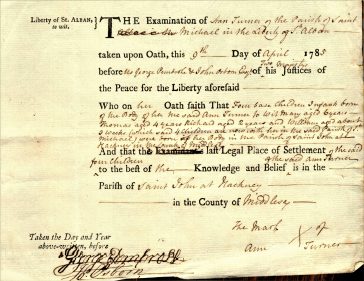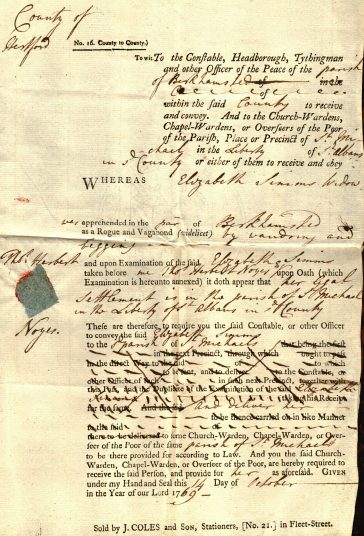Deportation awaited vagabonds


If you were found wandering and begging during the period from the 1600s to the 1700s, you would be apprehended as a rogue and a vagabond and faced being deported back to your legal place of settlement.
This was the fate of widow Elizabeth Simms, found roaming the streets of Berkhamsted in 1769. She was more than likely whipped before being ‘delivered’ to the constable or overseer of St Michael’s in the Liberty of St Albans.
For over 230 years parishes were legally bound to support the poor and with so many economic migrants passing through St Albans, this placed a heavy burden on local poor-rate payers.
Establishing settlement rights was a means of removing those that had no entitlement to local poor relief, like Ann Turner who in 1785 was returned from St Albans to Hackney, her legal place of settlement, with her four children, aged six, four, two and ‘about 3 weeks’.
Conveyance would have been by cart and those being sent ‘home’ would pass from parish to parish in the charge of local constables until they reached their destination.
1723 Workhouse Test Act gave parishes the option of denying outdoor-relief, offering the destitute the only option of the workhouse (called indoor- relief).
| 1782 Relief of the Poor Act, or Gilbert’s Act, aimed to organise poor relief on a county basis. St Albans did not follow this initiative until later legislation was enacted at district level. | 1815 Removals under the 1660 Settlement Act increased at this time, perhaps due to the large numbers of returning soldiers who had fought in Wellington’s army. |




